Ever wondered how words can make or break a brand’s success? In this article, we’ll explore the diverse types of copywriting that power today’s businesses and help them connect with their target audience.
From website content to persuasive social media captions, copywriting plays a vital role in every aspect of your marketing strategy.
So, buckle up and get ready to discover the magic behind the words that turn heads, spark curiosity, and inspire action.
Advertising Copywriting
Advertising copywriting is the process of creating persuasive and engaging text to promote a product, service, or idea through various advertising mediums.
The primary goal of advertising copywriting is to grab the attention of the target audience, evoke emotions, and persuade them to take a specific action, such as making a purchase or visiting a website.
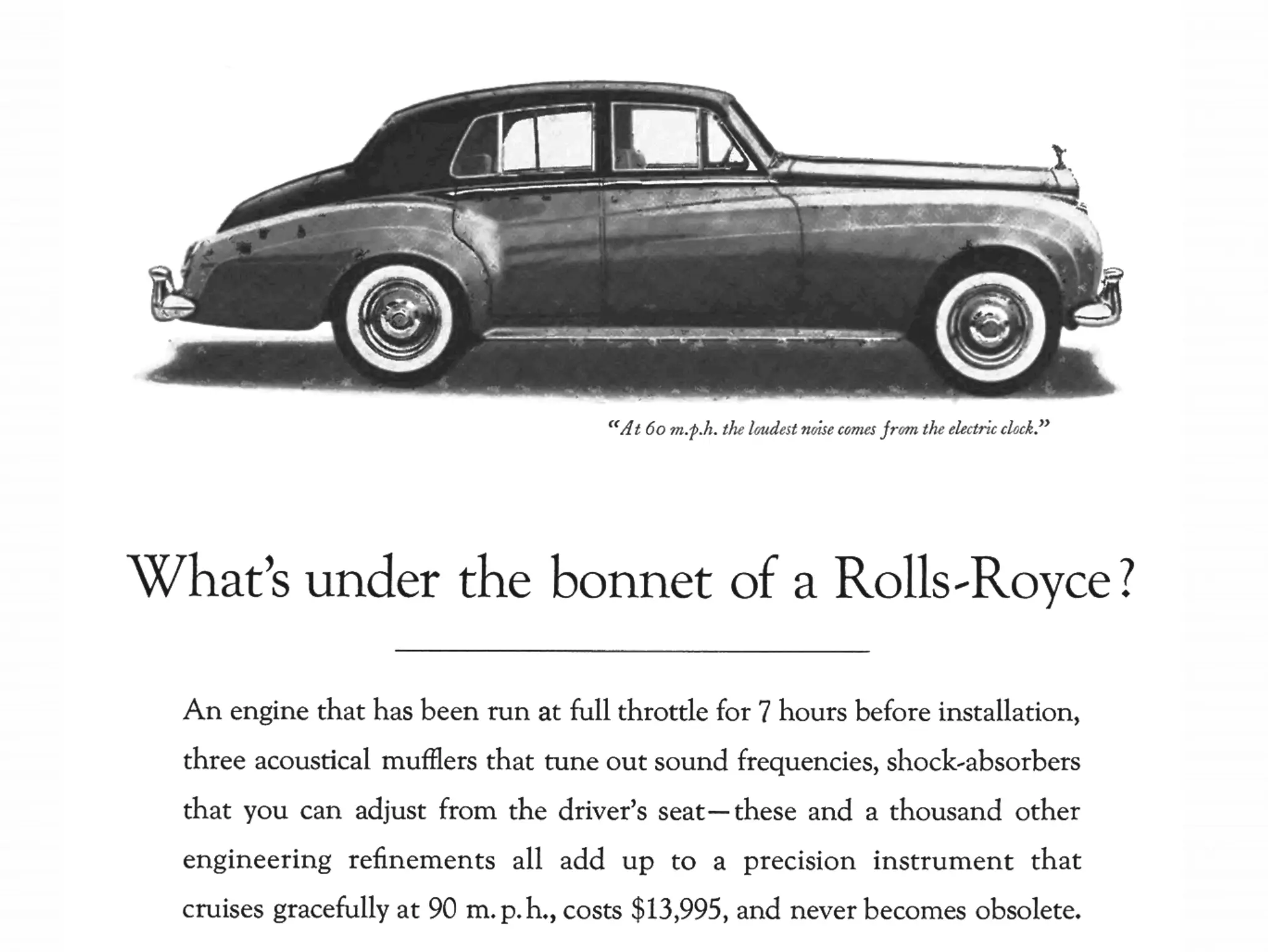
Advertising copywriters work closely with marketing teams, creative directors, and designers to develop effective advertising campaigns.
Here are some key elements and aspects of advertising copywriting:
- Types of advertising media: Advertising copywriting can be found across various media platforms, including print (newspapers, magazines, and billboards), radio, television, and digital (websites, banner ads, and social media).
- Headlines: A strong headline is essential for capturing the audience’s attention and sparking their interest. Headlines should be clear, concise, and intriguing to encourage the reader to explore the rest of the advertisement.
- Taglines and slogans: These are short, memorable phrases that encapsulate a brand’s message or unique selling proposition (USP). Taglines and slogans should be catchy, easy to remember, and convey the core benefit of a product or service.
- Body copy: This is the main text of an advertisement, where the copywriter elaborates on the product or service’s features, benefits, and advantages. The body copy should be persuasive, engaging, and focused on addressing the needs and desires of the target audience.
- Call-to-action (CTA): A CTA is a clear, direct instruction that encourages the audience to take a specific action, such as “Buy Now,” “Learn More,” or “Sign Up.” CTAs should be prominently placed and visually distinctive to motivate the reader to respond.
- Tone and style: Advertising copywriting often requires the use of a specific tone and style to resonate with the target audience. Factors such as demographics, preferences, and the nature of the product or service can influence the choice of language, humor, and cultural references in the copy.
- Visual and textual harmony: In many cases, advertising copywriting is accompanied by visual elements, such as images, graphics, or videos. The copywriter must ensure that the text complements and enhances the visual elements to create a cohesive and effective advertisement.
- Brand consistency: Advertising copywriters need to ensure that their work aligns with the brand’s identity, values, and messaging guidelines. Consistent branding helps build recognition, trust, and loyalty among consumers.
In summary, advertising copywriting is a specialized form of writing that aims to persuade and engage the target audience through various media platforms. It requires a combination of creativity, marketing knowledge, and an understanding of the target audience to create effective and memorable advertising campaigns.
Digital Copywriting
Digital copywriting is all about creating compelling and engaging content for various digital platforms to drive traffic, increase engagement, and convert visitors into customers. As a digital marketer, I cannot stress enough the importance of effective copywriting in achieving your marketing goals.

So, let’s explore some key aspects of digital copywriting that can help you level up your online marketing game:
- Understand your audience: Just like in any marketing strategy, knowing your target audience is crucial. Spend time researching your audience, their preferences, pain points, and desires. The better you understand them, the more relevant and persuasive your copy will be.
- Optimize for search engines (SEO): SEO is a vital component of digital copywriting. By optimizing your content with relevant keywords, proper formatting, and internal and external links, you can improve your website’s visibility in search engine results and drive more organic traffic.
- Craft engaging headlines: A captivating headline is your first opportunity to grab your reader’s attention. Use powerful words, numbers, and questions to create curiosity and entice them to click and read your content.
- Focus on benefits, not features: When writing digital copy, always emphasize the benefits your product or service provides to your target audience. Explain how it solves their problems or improves their lives, rather than merely listing its features.
- Use persuasive language: Incorporate persuasive techniques, like scarcity, social proof, and storytelling, to create a sense of urgency and trust in your copy. This will help nudge your audience towards taking the desired action.
- Keep it concise and scannable: Online readers have short attention spans, so it’s crucial to make your copy easy to digest. Use short paragraphs, bullet points, and subheadings to break up your text and improve readability.
- Include strong calls-to-action (CTAs): Guide your readers towards the next step with clear and compelling CTAs. Whether it’s signing up for your newsletter, downloading a resource, or making a purchase, your CTAs should stand out and be persuasive.
- Test and measure: In the world of digital marketing, data is king. Regularly test different headlines, CTAs, and copy elements to see what resonates with your audience. Analyze the results, and continually refine your copywriting approach to improve your conversion rates.
In a nutshell, digital copywriting is all about creating persuasive, engaging, and SEO-friendly content that drives results. By understanding your audience, optimizing for search engines, and incorporating persuasive techniques, you can create compelling digital copy that drives traffic, engages users, and ultimately, converts them into customers.
SEO Copywriting
SEO copywriting, a crucial aspect of digital marketing, can help you drive more organic traffic to your website and improve your search engine rankings. Here’s an example of search engine listings that are optimized through copywriting and metadata:
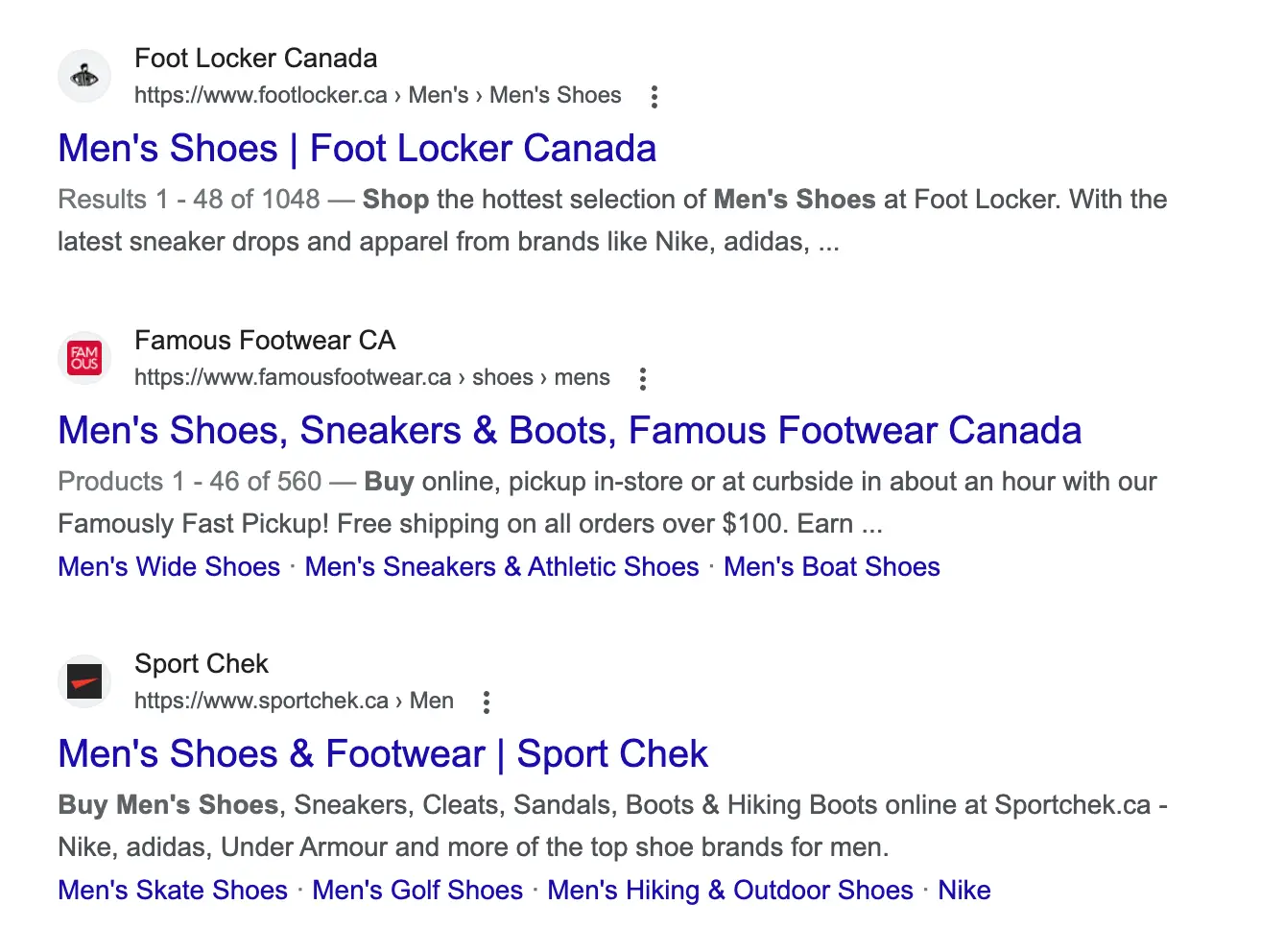
So, let’s dive right in and explore some key tips to help you master the art of SEO copywriting.
- Keyword research: The foundation of SEO copywriting lies in identifying the right keywords your target audience is using to search for information, products, or services related to your niche. Use tools like SEMrush to find relevant keywords with good search volume and low to moderate competition.
- Keyword placement: Once you have your target keywords, strategically place them throughout your content. Include them in your title tag, headings, subheadings, meta description, and within the body text. Remember, don’t overdo it! Keyword stuffing can harm your rankings. Aim for a natural flow and focus on readability.
- Write for humans first, search engines second: While it’s essential to optimize your content for search engines, your primary focus should be on your readers. Create engaging, informative, and valuable content that addresses their needs and provides solutions to their problems.
- Use descriptive and compelling headlines: Craft headlines that accurately reflect the content and entice users to click. Including your target keyword in the headline can also signal its relevance to search engines.
- Optimize your content structure: Break up your content into smaller sections using headings and subheadings. This not only improves readability but also helps search engines understand the hierarchy and structure of your content. Additionally, use bullet points and numbered lists to make your content more scannable.
- Incorporate internal and external links: Linking to relevant internal pages on your website helps search engines better understand your content and can improve your site’s overall SEO. Meanwhile, linking to reputable external sources can add credibility and depth to your content.
- Improve readability: Online readers prefer easy-to-read and digestible content. Use short paragraphs, simple sentences, and everyday language. You can also use tools like Hemingway Editor or Grammarly to check and improve the readability of your text.
- Optimize images: Images can enhance your content and make it more visually appealing. However, it’s crucial to optimize them by compressing the file size, using descriptive file names, and adding alt text with your target keywords for improved accessibility and SEO.
- Monitor and update your content: SEO is an ongoing process. Regularly review your content’s performance and rankings, and update it as needed to keep it fresh, relevant, and optimized.
- Focus on user intent: Align your content with the intent behind the keywords you’re targeting. Understand whether users are looking for information, a product, or a service, and create content that addresses their specific needs.
SEO copywriting is about striking the right balance between creating content that appeals to both your readers and search engines.
By conducting thorough keyword research, optimizing your content structure, and focusing on user intent, you can craft content that drives organic traffic and improves your search engine rankings.
Enroll in my SEO copywriting course to learn more.
Content Marketing Copywriting
Content marketing is all about creating and sharing valuable, informative, and engaging content with the goal of attracting and retaining your target audience. As a matter of fact, 52% of consumers are more likely to purchase from a business that publishes content.
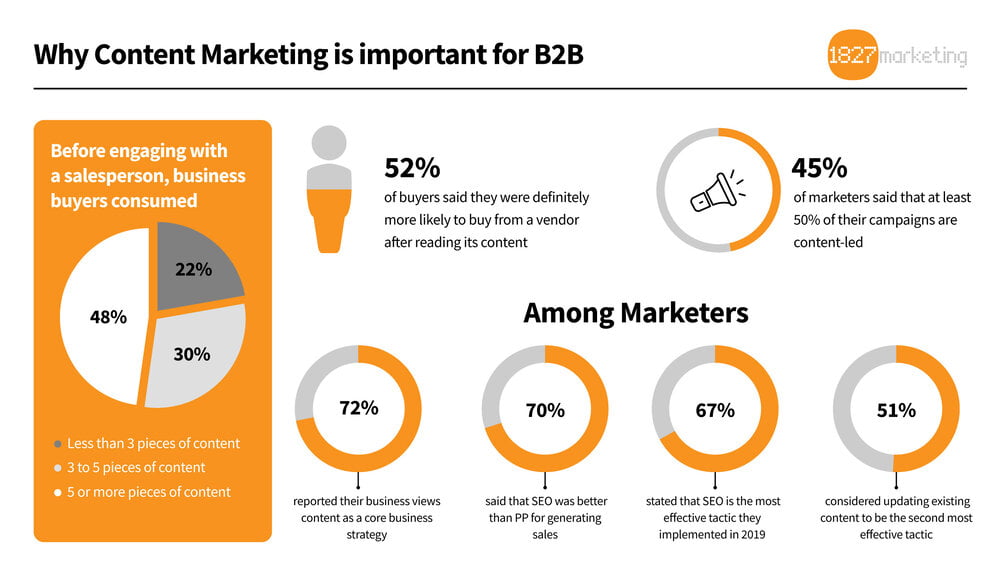
Effective content marketing copywriting can help you build brand awareness, drive traffic, generate leads, and ultimately, boost your sales. So let’s dive into some key tips and strategies to help you excel in content marketing copywriting.
- Study your audience: Understanding your target audience is critical in content marketing. Identify their pain points, desires, and preferences, so you can create content that resonates with them and addresses their needs.
- Establish your metrics: Before diving into content creation, set clear goals for your content marketing efforts. This could be increasing brand awareness, generating leads, or nurturing existing customers. Having specific goals in place will help you create more focused and effective content.
- Create high-quality, valuable content: Focus on producing content that offers genuine value to your audience. This could be in the form of blog posts, articles, whitepapers, ebooks, infographics, or videos. Provide useful information, solve problems, or answer questions your audience may have.
- Tell a story: Storytelling is a powerful way to engage your audience and make your content more memorable. Share stories about your brand, customers, or industry to create an emotional connection with your audience.
- Maintain a consistent brand voice: Develop a unique brand voice that reflects your brand’s personality and values. This will help you create a consistent experience for your audience across all your content marketing channels.
- Optimize for SEO: While your primary focus should be on your audience, don’t forget about search engines. Optimize your content with relevant keywords, proper formatting, and internal and external links to improve its visibility and drive more organic traffic.
- Use compelling headlines: Create attention-grabbing headlines that spark curiosity and encourage your audience to click and read your content. You can use tools like CoSchedule’s Headline Analyzer to test and optimize your headlines.
- Include calls-to-action (CTAs): Encourage your audience to take the next step with clear and persuasive CTAs. This could be signing up for a newsletter, downloading a resource, or sharing your content on social media.
- Distribute and promote your content: Creating great content is only half the battle. Share and promote your content through various channels, such as social media, email marketing, and guest posting, to reach a wider audience and drive more traffic.
- Analyze and measure your results: Track your content’s performance using analytics tools like Google Analytics. Identify what’s working and what’s not, and use this data to refine your content marketing strategy and improve your results.
Content marketing copywriting focuses on publishing valuable, engaging, and consistent content that resonates with your target audience and helps you achieve your marketing goals.
By understanding your audience, setting clear goals, and optimizing your content for both humans and search engines, you can establish yourself as an authority in your niche and drive long-term success!
Technical Copywriting
Technical copywriting is a specialized form of copywriting that focuses on creating clear, concise, and informative content for technical products, services, or topics. And, they’re paid up to $80,000/year on average!
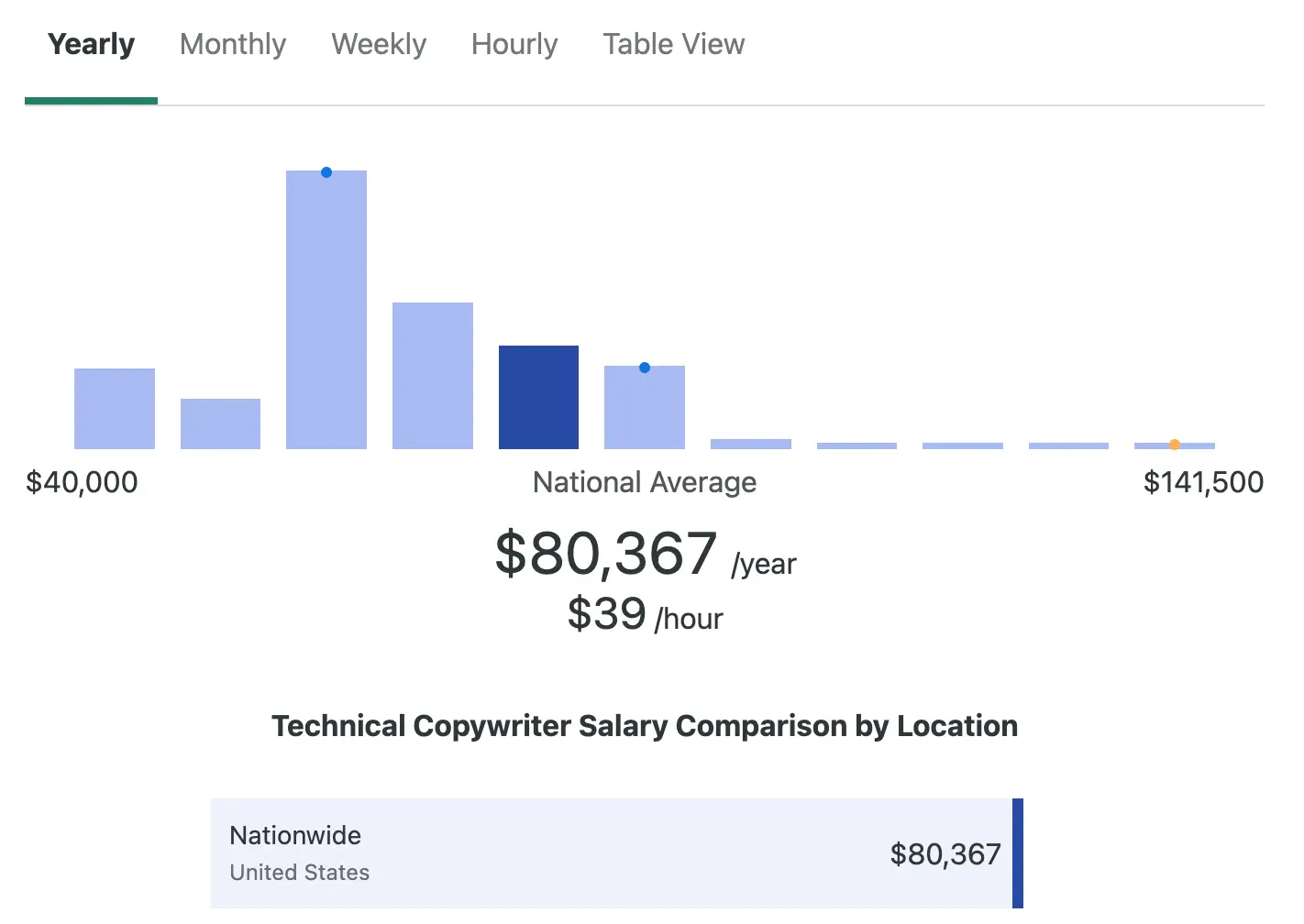
Technical copywriters need to have a strong understanding of the subject matter and the ability to break down complex concepts into easily digestible content for their target audience.
So, let’s dive into some key strategies and tips to help you excel in technical copywriting.
- Develop subject matter expertise: To be an effective technical copywriter, it’s essential to have a solid grasp of the subject matter. Invest time in learning about the industry, product, or technology you’re writing about, and stay updated on the latest trends and developments.
- Define your target audience: Identify the specific audience you’re writing for, such as engineers, developers, or non-technical end-users. This will help you tailor your content to their level of expertise and address their specific needs and concerns.
- Simplify complex concepts: One of the primary goals of technical copywriting is to make complex ideas accessible and understandable. Use plain language, analogies, and real-world examples to break down complicated concepts and make them more relatable to your audience.
- Be precise and accurate: In technical copywriting, accuracy is paramount. Ensure that your content is factually correct, up-to-date, and based on reliable sources. Double-check all technical terms, specifications, and data to avoid errors and maintain credibility.
- Use a logical structure: Organize your content in a logical and systematic way, so it’s easy for your audience to follow and comprehend. Start with an overview of the topic, then move on to specific details, and wrap up with a summary or conclusion.
- Incorporate visuals: Visual aids, such as diagrams, charts, or infographics, can help clarify complex concepts and enhance your audience’s understanding of the material. Use visuals strategically to support and supplement your written content.
- Avoid jargon and buzzwords: While it’s essential to use industry-specific terminology when necessary, avoid overloading your content with jargon or buzzwords that may confuse or alienate your audience. Instead, focus on providing clear explanations and context.
- Write with clarity and conciseness: Technical copywriting should be clear, concise, and to the point. Use short sentences, active voice, and everyday language to improve readability and avoid ambiguity.
- Edit and proofread: Technical content must be error-free and polished. Edit and proofread your work meticulously, paying close attention to grammar, punctuation, and clarity. Consider using tools like Grammarly or Hemingway Editor to help you refine your writing.
- Gather feedback and iterate: Collaborate with subject matter experts, colleagues, or your target audience to gather feedback on your content. Use this input to continually improve your technical copywriting skills and adapt your approach as needed.
Technical copywriting involves conveying complex information in a clear, concise, and accessible manner. By developing subject matter expertise, simplifying complex concepts, and focusing on clarity and accuracy, you can create technical content that resonates with your target audience and helps them better understand the subject matter at hand.
Direct Response Copywriting
The holy grail of copywriting. Whether you want them to make a purchase, sign up for a newsletter, or download a resource, direct response copywriting is all about driving conversions and delivering measurable results. Check out my video on copywriting examples from Apple to see real-life examples:
Here are some key strategies and tips to help you master this art.
- Focus on your target audience: As with any marketing effort, understanding your audience is crucial. Know their pain points, desires, and preferences to create persuasive copy that addresses their needs and encourages them to take action.
- Craft a compelling offer: The cornerstone of direct response copywriting is a strong, irresistible offer. Clearly communicate the benefits of your product or service, and explain how it can solve your audience’s problems or fulfill their desires. Make your offer time-sensitive or limited to create a sense of urgency.
- Develop a strong headline: A powerful headline can grab your audience’s attention and entice them to read your copy. Use curiosity, benefits, or emotional triggers to craft a headline that resonates with your target audience.
- Establish credibility and trust: To persuade your audience to take action, you need to establish trust. Share testimonials, case studies, or endorsements to demonstrate social proof, and showcase your expertise, experience, or credentials to build credibility.
- Appeal to emotions: People are more likely to take action when their emotions are triggered. Use storytelling, vivid language, and emotional appeals to connect with your audience on a deeper level and drive them to respond.
- Use persuasive techniques: Incorporate proven persuasive techniques, such as scarcity, exclusivity, and authority, to strengthen your copy and encourage your audience to act quickly.
- Provide clear calls-to-action (CTAs): Guide your audience towards the desired action with clear, specific, and compelling CTAs. Make your CTAs stand out visually and ensure they convey a sense of urgency.
- Keep it concise and focused: Direct response copywriting should be brief, to-the-point, and laser-focused on driving action. Eliminate any unnecessary information or distractions that could dilute your message.
- Test, measure, and optimize: Continuously test different elements of your copy, such as headlines, offers, and CTAs, to identify what works best for your audience. Use the insights gained from testing to optimize your copy and improve your conversion rates.
- Follow up and nurture: Once your audience has taken the initial action, follow up and nurture the relationship through email marketing, remarketing, or other targeted campaigns to encourage repeat business and build long-term customer loyalty.
Public Relations (PR) Copywriting
PR copywriting is a specialized form of writing that focuses on crafting persuasive and engaging content for public relations (PR) purposes. The industry itself is expected to grow to $133.82 billion by 2027.
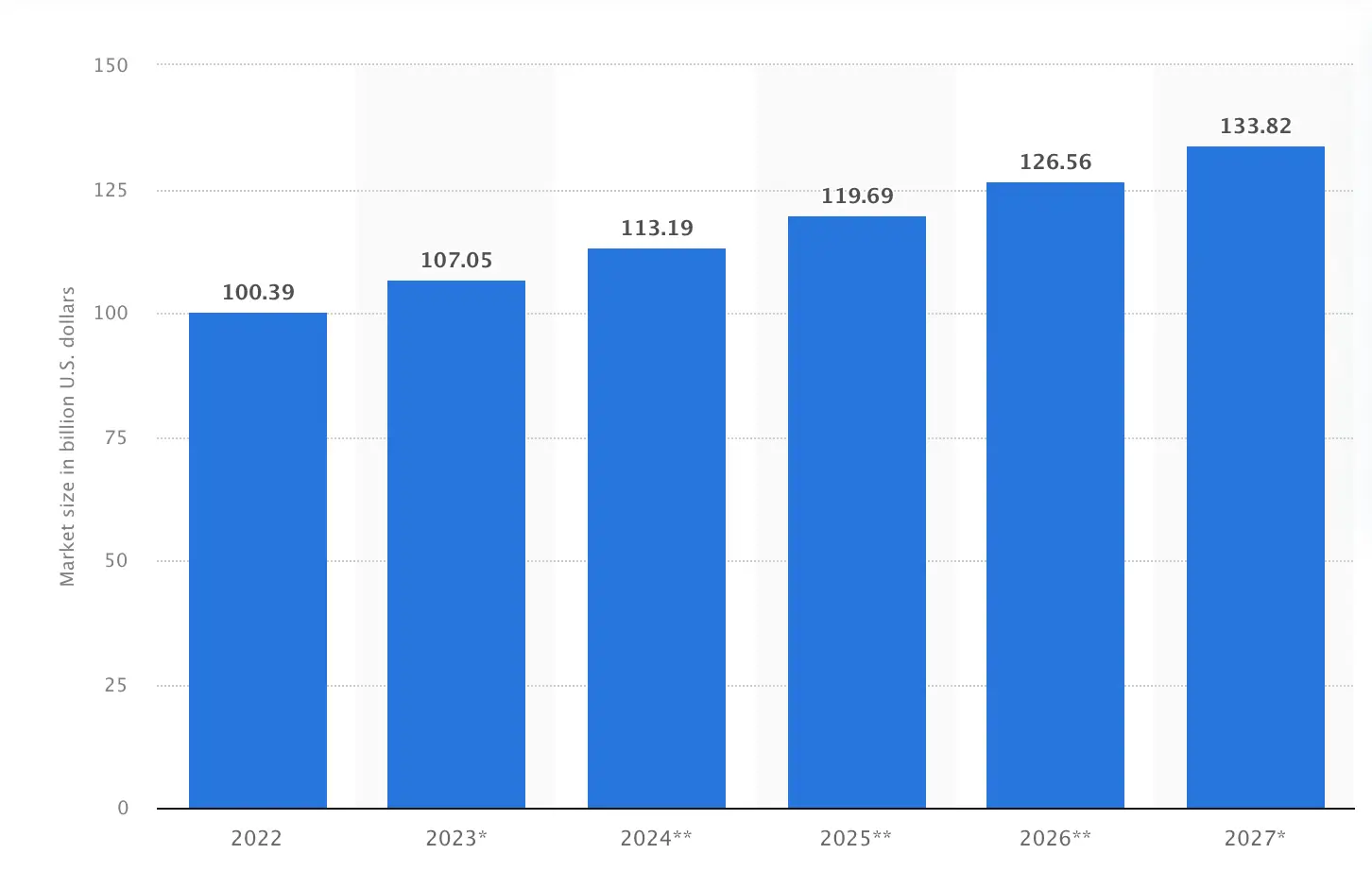
PR copywriters create press releases, media pitches, and other communication materials aimed at generating positive media coverage, shaping public perception, and building a favorable brand image.
Here’s what you need to know about PR copywriting.
- Understand your objectives: Before you start writing, be clear about the goals of your PR campaign. Are you aiming to announce a new product launch, share company news, or manage a crisis? Knowing your objectives will help you craft a more focused and effective message.
- Know your users: In PR copywriting, your primary audience is often journalists, editors, or influencers who can amplify your message. Understand their preferences, the type of stories they cover, and the language they use to increase the chances of your content getting picked up.
- Craft a compelling headline: Your headline should be attention-grabbing and newsworthy, enticing journalists to read further. Keep it concise, and make sure it accurately reflects the content of your press release or pitch.
- Lead with the most important information: Journalists are busy and often inundated with pitches. To make your content stand out, follow the inverted pyramid structure: lead with the most crucial information first, followed by supporting details, and end with background information.
- Use storytelling techniques: Telling a captivating story can help make your PR content more engaging and memorable. Use anecdotes, quotes from key stakeholders, or human interest angles to create an emotional connection with your audience.
- Provide facts and data: Journalists value well-researched, fact-based content. Support your claims with relevant data, statistics, or expert opinions to add credibility and substance to your story.
- Be concise and clear: PR copywriting should be clear, concise, and free from jargon or fluff. Use simple language, short sentences, and active voice to improve readability and ensure your message is easily understood.
- Include multimedia assets: When appropriate, include high-quality images, videos, or infographics to supplement your content and make it more visually appealing. This can increase the likelihood of your story getting picked up by media outlets.
- Offer exclusivity or embargo options: Journalists appreciate exclusivity or embargoed content, as it gives them a competitive edge. Consider offering exclusive access to your news or an embargo period to increase the chances of your content getting published.
- Build relationships with journalists: PR copywriting is not just about crafting the perfect pitch or press release. Building relationships with journalists, editors, and influencers is vital for the long-term success of your PR efforts. Engage with them on social media, attend industry events, and share their content to establish a rapport and increase the likelihood of your pitches getting noticed.
PR is all about creating engaging, newsworthy content that captures the attention of journalists and helps you achieve your public relations objectives. Leverage multiple channels to get your news out and make something that promotes sharing to go viral.
Social Media Copywriting
Writing sales copy for social media involves creating attention-grabbing stories, captions, tweets, and other content that drives engagement. Seeing as there are over 4 billion worldwide social media users, it’s more important than ever to learn this skill.

Now, let’s break down the approach for some of the most popular social media networks.
- Facebook: Facebook is all about storytelling and connecting with your audience. So, when crafting your copy, focus on creating longer posts that showcase your brand’s personality and provide value to your followers. Don’t forget to use eye-catching images and incorporate questions to spark conversation. Oh, and emojis can help add some flair to your posts as well!
- Twitter: We all know Twitter is all about brevity, so keep your tweets short and sweet—within the 280-character limit. Use hashtags to join trending conversations, and don’t be afraid to showcase your brand’s personality with a touch of humor. Also, consider including images, GIFs, or videos to boost engagement.
- Instagram: Instagram is a visual platform, but your captions matter too! Use your copywriting skills to create compelling captions that complement your images or videos. Keep them concise, but don’t shy away from using storytelling to connect with your audience. And remember to use relevant hashtags to increase your content’s visibility.
- LinkedIn: LinkedIn is a professional network, so your copy should reflect that. Focus on providing value and showcasing your expertise through thought leadership content. Keep your tone professional, but don’t be afraid to show your personality. Use attention-grabbing headlines, and don’t forget to include a call-to-action (CTA) to drive engagement.
- Pinterest: Pinterest is all about visuals and inspiration, so make sure your copy complements your pins. Create keyword-rich descriptions that help users understand what your pin is about and how it can benefit them. Remember to use a conversational tone and include a CTA to encourage users to click through to your website.
- TikTok: TikTok is a fast-paced, short-video platform, so your copy should be concise and engaging. Use captions that capture the essence of your video and intrigue users to watch. Keep it light and entertaining, and don’t forget to use relevant hashtags to increase visibility.
Scriptwriting
Scriptwriting is the art of crafting compelling stories, dialogues, and scenarios for various forms of media, such as films, TV shows, commercials, and even podcasts. It’s all about creating a captivating narrative that engages audiences and takes them on an unforgettable journey.
Here’s a cool fact, too: the historical and faith genres tend to have the longest scripts!

Here’s how you can perform scriptwriting and break into this exciting field:
- Learn the basics: Start by understanding the fundamental principles of storytelling, character development, and dialogue. Research different script formats and familiarize yourself with industry-standard scriptwriting software, like Final Draft or Celtx.
- Read scripts: Study scripts from your favorite movies, TV shows, or plays to learn how experienced writers structure their stories, create memorable characters, and write engaging dialogues. This will help you develop a sense of what works and what doesn’t in scriptwriting.
- Write, write, write: Practice makes perfect! Begin by writing short scenes, dialogues, or even one-page scripts to develop your skills. As you gain confidence, move on to longer scripts and experiment with different genres and formats.
- Get feedback: Share your work with friends, family, or online communities to gather valuable feedback. This will help you identify your strengths and weaknesses as a writer and give you insights into how to improve your craft.
- Build a portfolio: Create a diverse portfolio of your best scripts, showcasing your unique writing style and versatility. This will be crucial when you start reaching out to potential clients or applying for jobs in the industry.
- Network: Connect with fellow writers, filmmakers, and industry professionals through online forums, social media, and networking events. Building relationships can lead to collaboration opportunities and help you learn about job openings.
- Submit your work: Submit your scripts to screenwriting competitions, film festivals, and online platforms that accept script submissions. Winning or placing in a competition can help you gain exposure, credibility, and even secure representation from an agent or manager.
- Keep learning: Stay updated on industry trends, attend workshops, and join online courses to continually improve your skills and knowledge. The more you learn, the better equipped you’ll be to succeed in the competitive world of scriptwriting.
Grant and Proposal Writing
Last but not least, grant writing. This is the process of crafting well-structured proposals to secure funding from various sources, such as government agencies, foundations, and corporations. Here’s an example of a grant proposal template to get an idea of what you’d be writing:
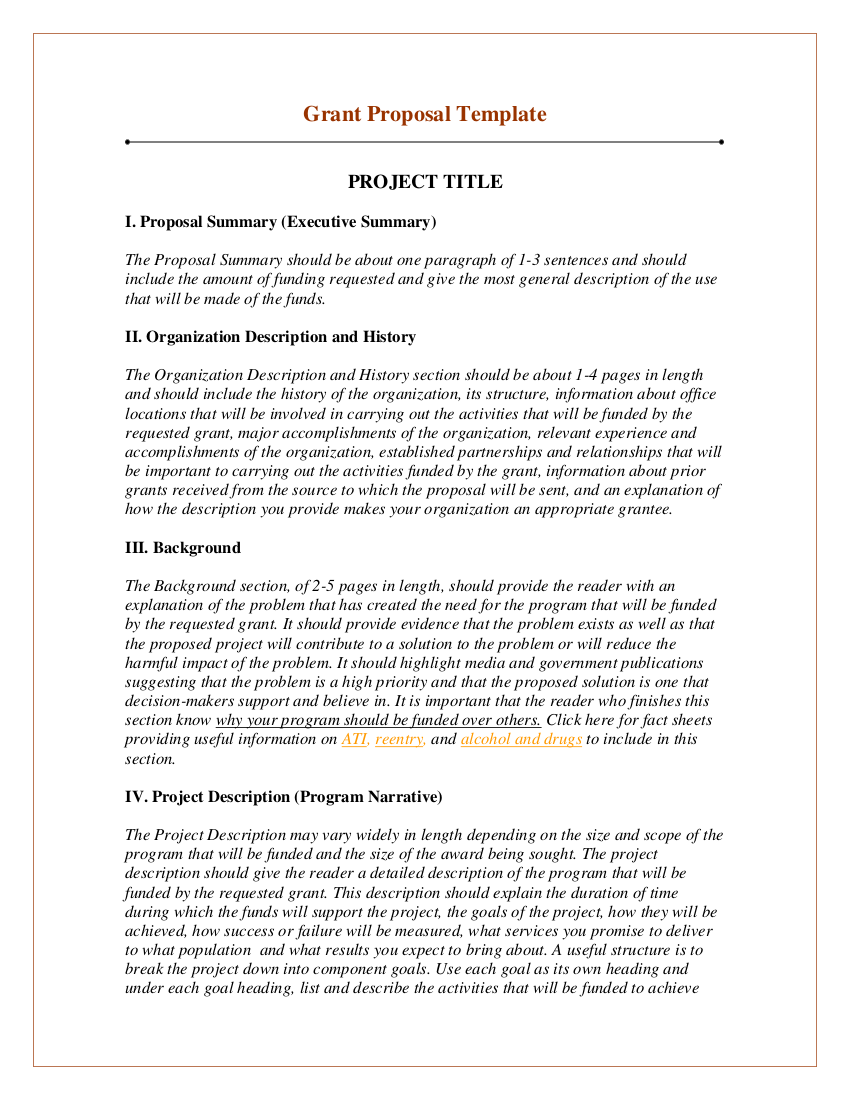
These proposals detail the goals, objectives, budget, and expected outcomes of a specific project or program. The key to successful grant writing is presenting a clear, compelling, and persuasive case that aligns with the funding organization’s priorities and goals.
Now, let’s explore how to do grant writing:
- Learn the basics: Start by understanding the fundamentals of grant writing, such as researching funding sources, developing project ideas, and crafting compelling proposals. Familiarize yourself with common grant proposal components, including executive summaries, project descriptions, budgets, and evaluation plans.
- Gain experience: Volunteer to write grant proposals for local nonprofits, schools, or community organizations. This will give you hands-on experience in researching, writing, and submitting proposals, while also helping you build a portfolio of your work.
- Take courses and workshops: Enroll in grant writing courses, workshops, or online programs to learn from experienced professionals and stay updated on best practices. These courses can also help you develop your skills and increase your credibility in the field.
- Build a portfolio: Showcase your grant writing expertise by creating a portfolio of successful proposals and related documents. This will help you demonstrate your skills and experience to potential clients or employers.
- Network: Connect with other grant writers, nonprofit professionals, and industry experts through online forums, social media, and networking events. Building relationships can lead to collaboration opportunities, job openings, and valuable insights into the grant writing world.
- Get certified: Consider obtaining a grant writing certification, such as the Grant Professional Certification (GPC) or Certified Grant Writer (CGW) designation. While not mandatory, these certifications can enhance your credibility and increase your chances of success in the field.
- Market yourself: Create a professional website, blog, or social media presence to showcase your grant writing expertise, share your successes, and attract potential clients or employers. You can also reach out to nonprofit organizations, foundations, or government agencies to offer your services as a freelance grant writer.
- Stay informed: Keep up-to-date with industry news, funding trends, and changes in grant regulations by subscribing to newsletters, blogs, or magazines focused on grant writing and the nonprofit sector. Staying informed will help you stay competitive and adapt to the ever-changing landscape of grant writing.
Wrapping Up The Different Types of Copywriting
There’s no shortage of types of copywriting to learn if you want to improve your marketing skills and value. While it can be hard to choose which one to focus on, I compiled some of the most common and important. To recap, they are:
- Advertising
- Digital channels
- Search engines
- Content marketing
- Technical material
- Direct response
- Public relations (PR)
- Social networks
- Scriptwriting
- Grants and proposals
Take your writing to the next level through my online courses or coaching.














